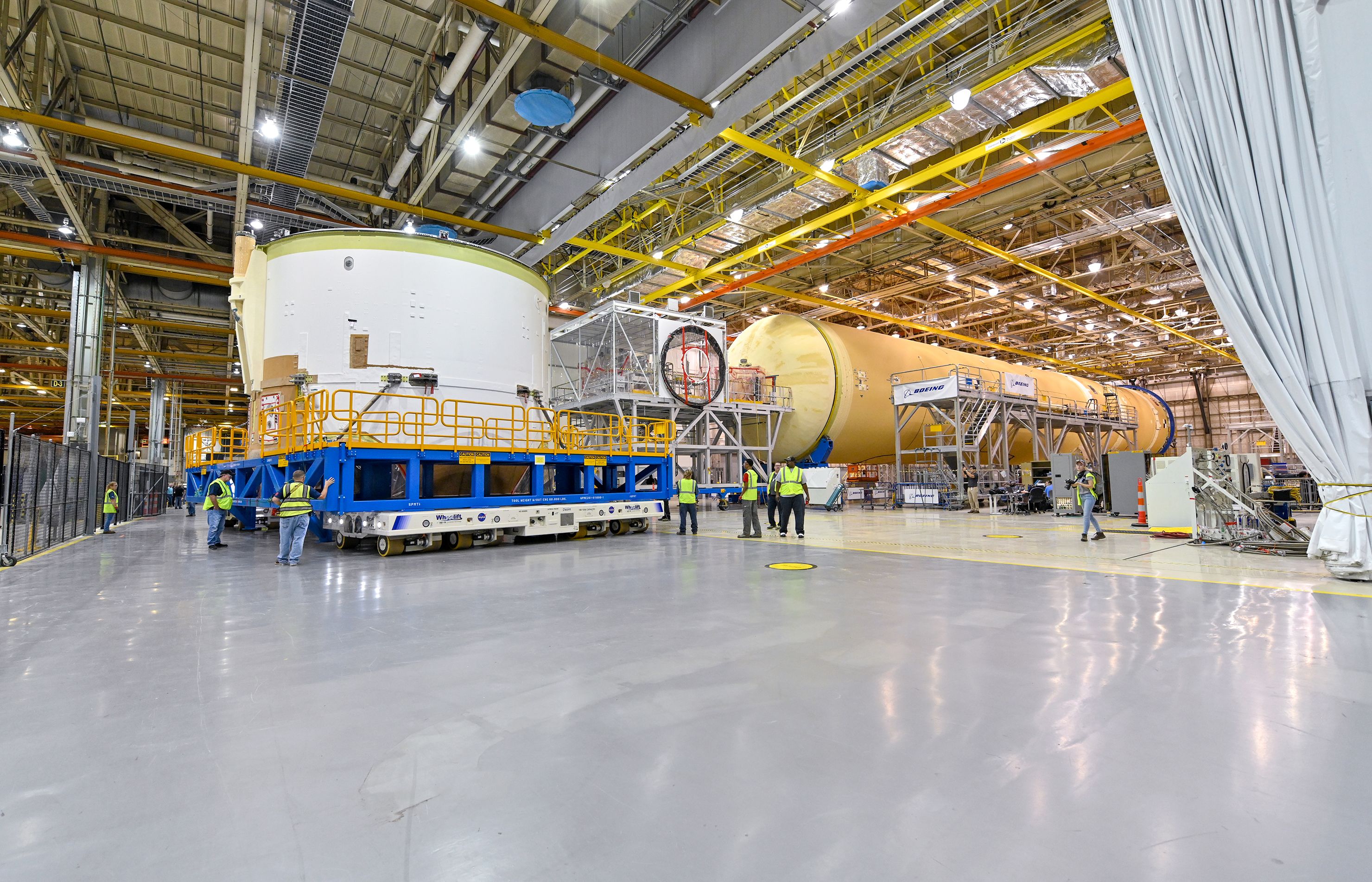The hardware for NASA’s Artemis 1 lunar mission is beginning to come together. According to NASA, the engine section of the Space Launch System (SLS) rocket is now assembled and ready to be joined to the rest of the SLS core stage. As shown in the video below, the engine section serves as the attachment point for the rocket’s four RS-25 engines and two solid rocket boosters, which are capable of producing a combined 8.8 million pounds of thrust. The next step for the team—connecting the engines to the main propulsion systems inside the engine section—is scheduled to begin this month.
“NASA’s powerful Space Launch System rocket and NASA’s Orion spacecraft are making progress to the pad,” the agency said. “Along with the Gateway in lunar orbit and a new human landing system, SLS and Orion create the backbone for the agency’s Artemis missions to the Moon that will land astronauts on the lunar surface by 2024.”
NASA is currently planning to launch the uncrewed Artemis 1 to orbit the Moon in 2020 as “the first integrated test of NASA’s deep space exploration systems: the Orion spacecraft, [SLS] rocket and the ground systems at Kennedy Space Center in Cape Canaveral, Florida.” Assuming Artemis 1 is a success, the second Artemis mission, planned for 2022, will “test Orion’s critical systems with humans aboard.” The program’s goal is to land astronauts on the Moon with Artemis 3 in 2024.




































Why the moon? Why send people? Why develop all this hardware that’s not suited to the goal of deep-space? They keep using the word “progress” but I don’t think they know what it means.